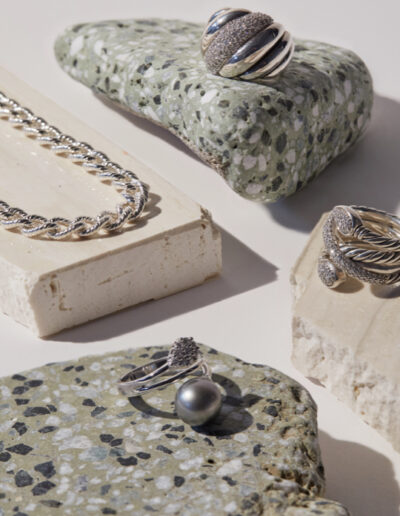KNOWLEDGE
Handbag 101:
Caring for patent
By Koyaana R. July 3, 2019

Patent leather has long been a staple in the handbag world,
with luxury houses using it to create edgier versions of some of their more classic styles. The glossy, wet-looking leather is certainly eye-catching, but it is a surprisingly difficult material to own. Here’s a look into this versatile and refreshing material, and how to care for it.
What Is Patent?
Patent was created in the United Kingdom in 1799 and reportedly gained its name due to recognition from the patent office. The initial stages of preparing this leather are the same as that of others, however, it is the finishing steps that differ. The earlier methods of creating patent included several different techniques: dyes and boiled oil with an oil varnish finish; either of linseed, whale or horse grease and finally lampblack (a black pigment made from soot). Patent leather became quite popular due to its shiny, water-resistant attributes. As demand spread, it finally made its way to the United States in 1818 and was commercially produced in 1822.
The patent leather we know and love today is primarily made with a blend of polyurethane and acrylic. Polyurethane creates a hard, durable, glossy finish, while acrylic allows for more flexibility. The combination of both creates a harmonious product that is both durable and flexible. The varnishes used today can be used on almost any quality leather but are most typically used on cattle hide. Patent leather requires three coats: the first coat is formulated to penetrate the leather; the second coat includes dye to color the leather; and the final coat is a clear coat that dries shiny, hard and waterproof.



Is It Worth It?
Patent leather is an excellent material if you’re looking to switch up your look and add a new texture to any ensemble. With this leather, however, it’s great to know what to expect if you plan to add it to your arsenal.
PROS |
CONS |
|
|
|
|
|
|
|
|
|
Care
Patent leather may seem like an easy material to care for because of its water-resistant exterior, however, it requires special care to preserve it, ensuring many happy years of wear. Here are some tips for keeping your patent leather handbags in tip-top shape:
Cleaning
Minor dirt, dust, and smudges can be removed by wiping with a damp cloth or paper towel using water or patent leather cleaner. For tougher smudges, use Windex Original to help buff away built up or stubborn grime. If using cleaning products on your handbag, always make sure to test a small inconspicuous area first. Alternatively, you can take your bag to a professional to ensure it is cleaned properly. Occasionally, you may encounter that your patent has become sticky to the touch. This is something that can potentially be rectified with professional cleaning. There are at home corrections, however, we recommend using these with caution as each may have different effects depending on the cause of the issue.
Storage
When it comes to storage, patent requires a bit more conscientious care. Preferably, always store patent handbags in a dust bag. When stored for a prolonged period of time pressed up against other items, color transfer is likely to happen. Patent is surprisingly porous and lighter colors will absorb darker colors it is in contact with. Storing in a dust bag not only prevents color transfer, but it also protects the bag from dust, moisture, and light. Prolonged exposure to light can cause significant discoloration and fading that is irreversible.
Wear
Finally, when wearing your patent leather handbag, color transfer can be an issue, so be careful when wearing it against dark or color-saturated clothing, such as blue jeans. To prevent this, it is recommended that you wipe down your bag after each use and avoid prolonged contact with darker fabrics that are prone to bleeding.
Originally published on April 10, 2018, by Sarah W. Article has been updated for consistency and accuracy.



